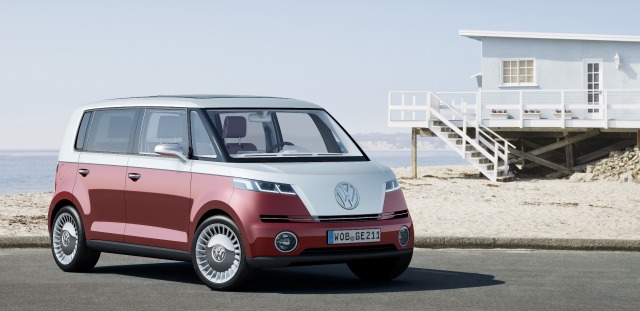
The Volkswagen Type 2 is one of the most recognizable vehicles of the 1960s, known in America as the Microbus and in Germany as the Bulli. A press release reveals that the latter moniker is the one VW is adopting for its new line of vehicles inspired by a 2001 concept Microbus design that never went into production.
While the basic shape pay homage to the classic Type 2, the Bulli does away with the older model’s nine-passenger seating, sliding doors and panoramic windows, delivering instead a more tradition four-door van with seating for five. There’s also an 85 kW engine which can go roughly 186 miles on a single charge as well as alternate gas and diesel engines for extending that distance. It’s a sluggish beast, just like its predecessor, going from 0 to 62 mph in 11.5 seconds and offering an electronically limited top speed of 87 mph.
In keeping with the auto manufacturer’s youth-focused product orientation, an Apple iPad table is central to the Bulli’s “infotainment” system. There is actually a removable iPad in the center console which, in addition to all of the usual device features, also handles the vehicle’s Bluetooth hands-free headset connections and serves as navigation system. The iPad mount is further outfitted with climate controls and a centrally located hazards switch. Presumably this will be an option as opposed to a standard feature.
The coloring in the above image may throw you off somewhat, but the body design of this Bulli is actually quite a dramatic difference from the old Type 2. The look falls closer to that of the Scion xB, ditching the forward control design that positioned drivers of the original models above the front wheels. The iPad control center is wildly sci-fi though. Hopefully next year’s model is built around an iPad 3 that does your driving for you.
Editors' Recommendations
- Does the iPad Pro (2024) come with a pen?
- This hidden iPad Pro Easter egg is unbelievably cool
- Best refurbished iPad deals: Get an iPad with warranty for $109
- Apple’s new iPad Air isn’t even out yet and it’s already discounted
- You’ll soon be able to control your iPhone and iPad with your eyes


